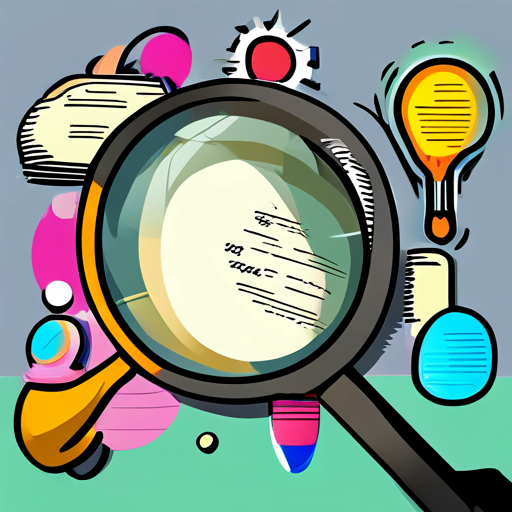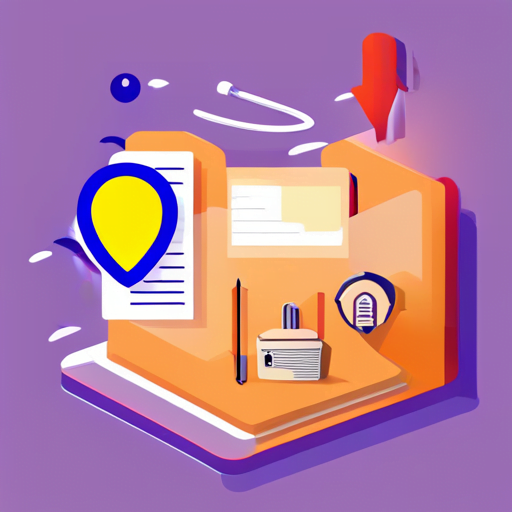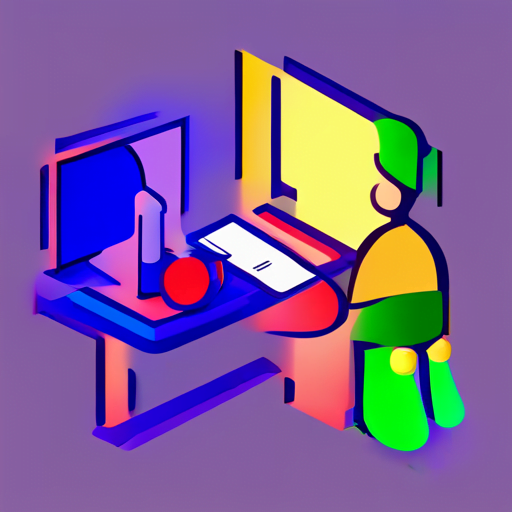Imagine you’re scrolling through an article online, trying to find the information you need. You feel like you’re drowning in a sea of words, unable to distinguish what’s important and what’s not. It can be overwhelming, but fear not! With some simple strategies, you can easily identify and highlight key information in online texts.
In this article, we’ll explore how to read online texts with purpose and efficiency so that you can extract the information you need quickly and effectively. Whether it’s for academic research or personal interest, learning how to identify and highlight key information will save you time and energy while improving your understanding of the text at hand.
So let’s dive in!
Table of Contents
Understand the Purpose of Your Reading

You want to make sure you’re really getting the most out of your online reading material, right? Well, understanding the purpose behind the text is absolutely crucial if you want to get there.
Before diving into an article or blog post, take a moment to consider what the writer is trying to accomplish with their words. Are they trying to persuade you of something? Inform you about a particular topic? Entertain you with a story?
Knowing the intended purpose will help guide your strategies for active reading. For example, if the goal is persuasion, pay close attention to any evidence presented and think critically about whether it supports the author’s argument.
If it’s informative in nature, focus on key facts and concepts that are central to understanding the topic at hand. Additionally, always keep in mind the importance of context – understanding who wrote something and why can provide valuable insight into how trustworthy or reliable their information might be.
Scan the Text for Important Details

When scanning a text for important details, there are a few key points to keep in mind.
First, look for headings and subheadings as they often provide an overview of the main topics covered in the text.
Additionally, pay attention to bolded or italicized text as these can indicate important information.
Finally, use bullet points and lists to identify key information and make it easier to locate later on.
By following these tips, you can quickly identify the most important details in any online text you come across.
Look for Headings and Subheadings
By examining the headings and subheadings, you can easily discern important content in digital documents. These headings and subheadings are usually bolded or highlighted to set them apart from the rest of the text.
They serve as a guide for readers who want to skim through the document quickly or those who want to look for specific information within it. Effective note-taking and active reading are crucial when identifying key information in online texts.
Visual aids, such as mind mapping, can help you organize your thoughts and better understand how different pieces of information relate to each other. By using headings and subheadings as a starting point, you can create an outline that highlights important points that you might have missed during initial readings.
This method also allows you to focus on critical details while ignoring extraneous ones, making it easier for you to retain essential information from digital documents.
Pay Attention to Bolded or Italicized Text
Don’t overlook the importance of bold or italicized text – they can often convey crucial details in a way that stands out from the rest of the content. These formatting techniques are used by writers to emphasize key points and make them easier for readers to identify. By paying attention to bold or italicized text, you can quickly recognize important information and use it to effectively take notes.
To illustrate this point, consider the following table:
| Bold Text | Meaning |
|---|---|
| This is an important concept. | The writer wants you to pay particular attention to this idea. |
| Do not skip this step! | This step is crucial and cannot be omitted. |
| Follow these instructions carefully. | It is essential that you follow these steps exactly as written. |
| Warning: Safety hazard ahead! | Proceed with caution – your safety may be at risk if you do not heed this warning. |
| Example: | The writer is providing an illustrative example to help clarify their point. |
By using effective note taking techniques, such as highlighting or underlining, you can easily reference these key pieces of information later on when reviewing the material. So don’t underestimate the value of bold or italicized text – they can be powerful tools for helping you better understand and remember online content.
Use Bullet Points and Lists to Identify Key Information
You can easily organize important details by using bullet points and lists, making it simple to absorb and remember the most significant parts of the content.
Bullet points are used to highlight key information and have many benefits. They allow you to break up large chunks of text into smaller, more manageable pieces. This makes it easier for your brain to process information and retain it.
Bullet point benefits include being able to quickly scan a document for important information without having to read through all of the text. They also help you visually separate different ideas or concepts from one another, making it easier to follow along and stay focused on what’s being discussed.
Lists are similar in that they provide an organized way of presenting information, but they have their limitations as well. For example, lists can become too long and overwhelming if there are too many items included, which can actually make it harder to remember the important details.
It’s important to strike a balance between including enough information while also keeping things concise and easy-to-digest for readers.
Identify Keywords and Phrases

Spotting important words and phrases is crucial when reading digital content. Did you know that research shows people spend an average of only 15 seconds on a webpage before deciding whether to stay or leave?
This means that you need to quickly identify the key information in any online text to make an informed decision about its relevance.
One strategy for identifying keywords and phrases in online texts is through keyword extraction and contextual analysis. Keyword extraction involves identifying the most frequently used words within a piece of text.
Contextual analysis, on the other hand, involves understanding the meaning behind those words by analyzing their context within the overall text. By combining these two strategies, you can quickly identify which words and phrases are most important in any given piece of digital content.
Use Highlighting and Annotation Tools

Using highlighting and annotation tools can help you easily pinpoint the most crucial parts of any digital content, making it simpler to understand and retain the information at hand. Highlighting techniques are great for emphasizing specific words or phrases that stand out to you. By selecting a word or phrase and choosing a highlight color, you’re able to visually separate important information from the rest of the text. This makes it easier for your brain to focus on what matters most.
Furthermore, annotation benefits allow you to add your own notes and thoughts directly into the content itself. This is especially helpful when trying to connect new information with prior knowledge or personal experiences. Annotations can also serve as reminders of key takeaways or potential action items related to the material.
By incorporating these highlighting and annotation tools into your digital reading routine, you’ll improve your ability to identify and remember important information, ultimately leading to more efficient learning and productivity in all areas of life.
Take Breaks and Avoid Information Overload

Don’t be a digital reading machine, take breaks and avoid frying your brain with an overload of online content. It’s easy to get lost in the sea of information available online, but it’s important to remember that our brains need rest too. Taking breaks not only helps us avoid overwhelm, but also has mental health considerations. Studies have shown that prolonged periods of screen time can lead to eye strain, headaches, and depression. So step away from the computer or put down your phone for a few minutes and give your brain some much needed downtime.
To further emphasize the importance of taking breaks while reading online content, consider this table:
| Time Spent Reading | Recommended Break |
|---|---|
| 20-30 minutes | 5 minute break |
| 30-60 minutes | 10 minute break |
| Over 1 hour | 15-20 minute break |
By taking regular breaks while consuming online content, you give yourself the opportunity to recharge and refocus. Not only will this help prevent burnout and overwhelm, but it can also improve your productivity in the long run. So don’t forget to prioritize your mental health when diving into the endless world of online texts!
Review and Summarize What You’ve Read

Make sure to review and summarize what you’ve read by taking a moment to gather your thoughts, reflect on the main points, and solidify your understanding before moving on to more content. This is one of the most effective strategies in identifying and highlighting key information in online texts.
By doing so, you’ll be able to retain important details that are relevant to your purpose or goal. However, it’s not always easy to do this. Common mistakes include rushing through the text without fully comprehending it, or getting lost in the details without seeing the bigger picture.
To overcome these challenges, try breaking down the text into smaller sections and taking notes as you go along. This will help you stay focused on what matters most while also giving you a reference point for future use.
With regular practice, reviewing and summarizing what you’ve read can become second nature – providing countless benefits for both personal and professional growth.
Practice and Refine Your Skills

You can enhance your reading comprehension abilities by practicing and refining your skills in identifying and highlighting key information in online texts.
One way to do this is through interactive exercises that challenge you to locate important details within a given text. These exercises may range from multiple-choice questions to fill-in-the-blank activities, and they’re designed to help you become more adept at recognizing critical pieces of information.
Another way to refine your skills is through feedback sessions with peers or instructors. These sessions allow for constructive criticism and provide an opportunity to receive personalized guidance on areas where you may need improvement.
Additionally, seeking out resources such as online tutorials or reading comprehension guides can also be beneficial in developing your ability to identify and highlight key information in online texts.
By continuously practicing these skills, you can improve your overall reading comprehension and better understand the content presented within various types of media.
Frequently Asked Questions
What are some effective ways to overcome distractions while reading online texts?
Feeling like you’re in a never-ending cycle of distractions when reading online? Don’t worry, you can break free with some tips for focus and limiting distractions.
One effective method is to utilize note-taking methods, such as jotting down important points or highlighting key information. This not only helps keep you engaged with the text but also allows for easier recall later on.
Additionally, try creating a quiet workspace, turning off notifications on your devices, and setting designated times for checking emails or social media. With these simple adjustments, you’ll be able to conquer those pesky online distractions and stay focused on the task at hand.
Are there any specific techniques to determine the credibility of information presented in online texts?
When evaluating the credibility of information presented in online texts, there are a few fact checking methods that you can use. First, consider the source of the information and whether or not it’s reputable.
Then, look for corroborating evidence from other sources to ensure accuracy.
Additionally, be aware of any biases that may be present in the text and evaluate them critically.
By using these techniques, you can make sure that you’re only relying on trustworthy information when reading online texts.
How can one improve their comprehension of technical or specialized terms used in online texts?
If you’re struggling to understand technical or specialized terms in online texts, there are several strategies that can help.
Online glossaries can be a great resource for defining unfamiliar words, while contextual clues within the text can provide additional context and meaning.
Collaborative learning through peer discussions is another effective method for improving comprehension. In fact, research shows that group discussions lead to higher levels of understanding compared to individual study.
So if you’re feeling lost in a sea of jargon and technical language, don’t despair – there are plenty of ways to improve your comprehension and master even the most complex topics.
Can highlighting and annotation tools be used effectively on mobile devices?
When it comes to highlighting and annotating online texts on mobile devices, the key is to find tools that are compatible with your device’s user interface. With so many different types of smartphones and tablets out there, it can be challenging to find a tool that works seamlessly with your specific device.
However, with a little bit of research and experimentation, you should be able to identify a few reliable options that allow you to highlight important information and make notes on the go. Some popular tools include Evernote, Pocket, and Google Keep. These apps provide easy-to-use interfaces that let you create bookmarks, highlight text passages, add comments or annotations, and more while you’re browsing through articles or other online content.
So, if you’re looking for effective ways to stay organized and focused while reading online texts on your mobile device, consider checking out some of these powerful annotation tools!
What are some strategies to manage time effectively while reading lengthy online texts?
When it comes to effective reading and time management, there are a few strategies you can use to make the most of your online texts.
First, set a specific amount of time for each text and stick to it. This will help you avoid getting bogged down in one piece for too long.
Next, skim through the text before diving in to get a sense of its structure and main points. As you read, take brief notes or highlight key phrases that stand out to you.
Finally, take breaks as needed to avoid fatigue and maintain focus. By following these tips, you can improve your reading speed and comprehension while still managing your time effectively.
Conclusion
Congratulations! You’ve learned how to identify and highlight key information in online texts. By understanding the purpose of your reading, scanning for important details, identifying keywords and phrases, using highlighting and annotation tools, taking breaks and avoiding information overload, reviewing and summarizing what you’ve read, and practicing and refining your skills, you’re now equipped with the necessary tools to effectively read online texts.
Remember the adage “a picture is worth a thousand words”? Well, in this case, “highlighting is worth a thousand memories”. By using these techniques to identify important information in online texts, you can ensure that you retain the most important details.
With practice and dedication, you’ll become a skilled reader who can quickly find crucial information in any text. So go ahead and start applying these techniques today!
